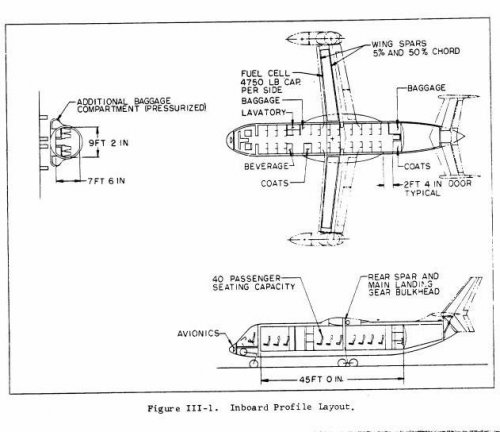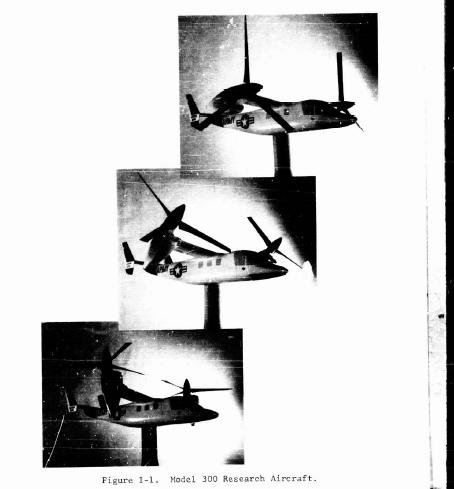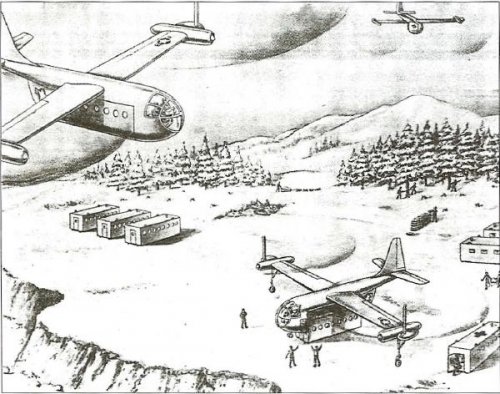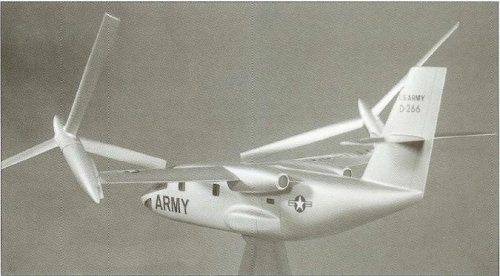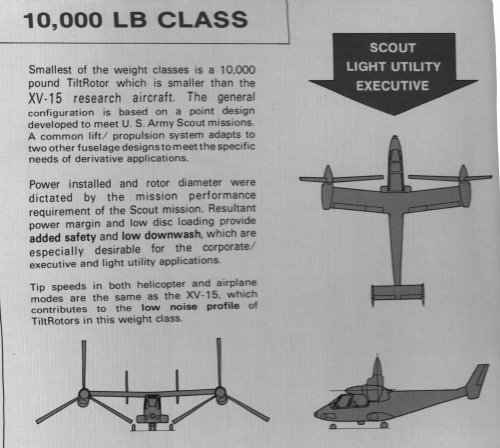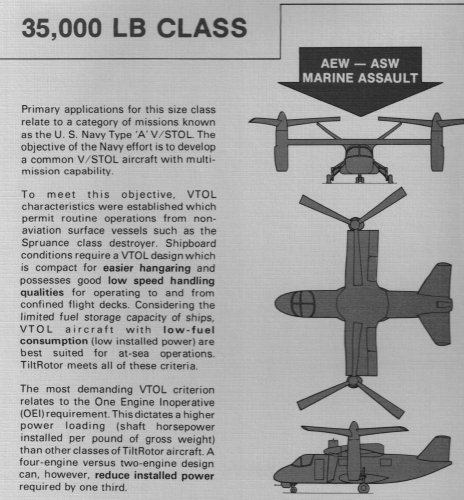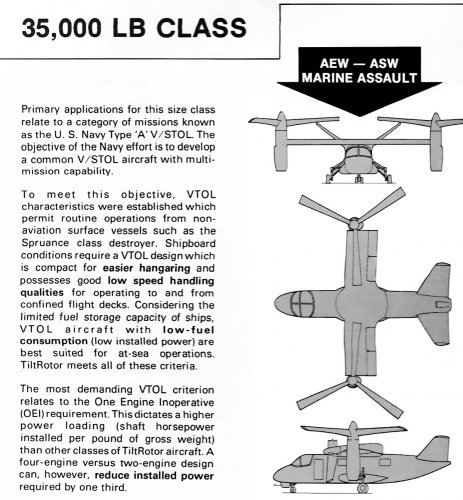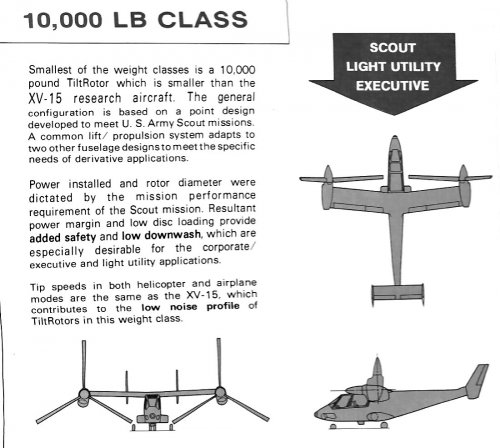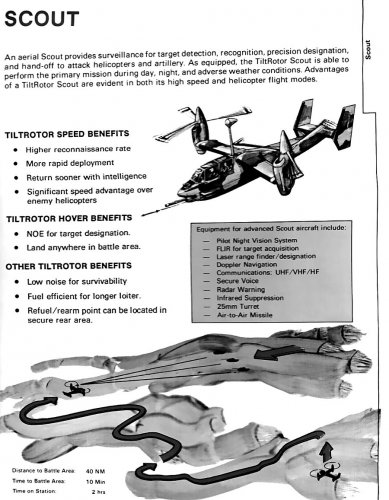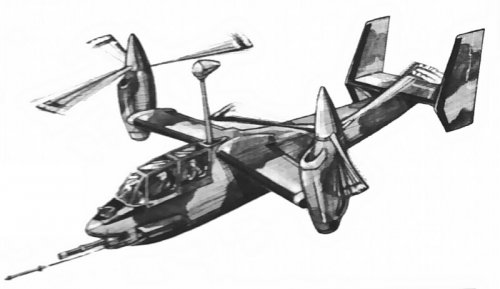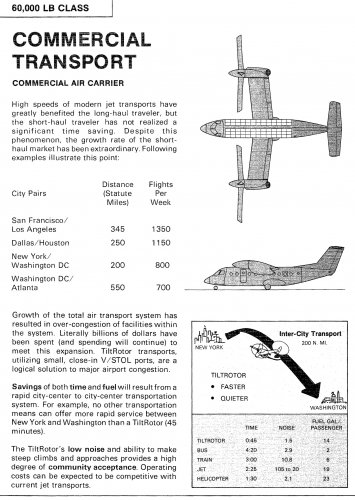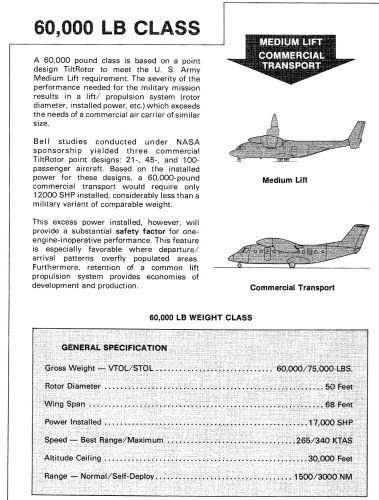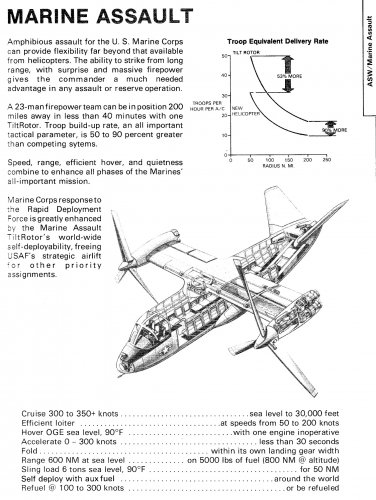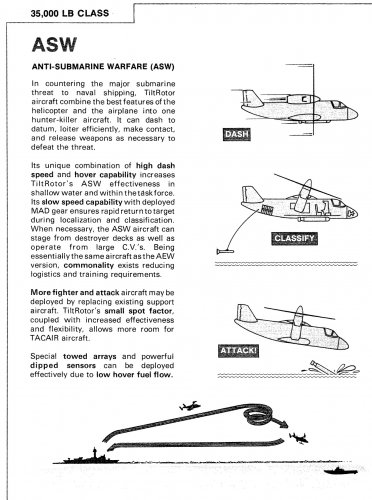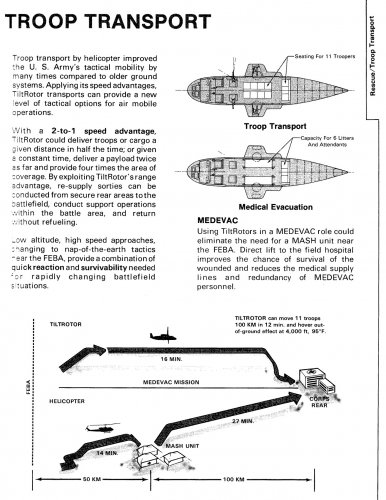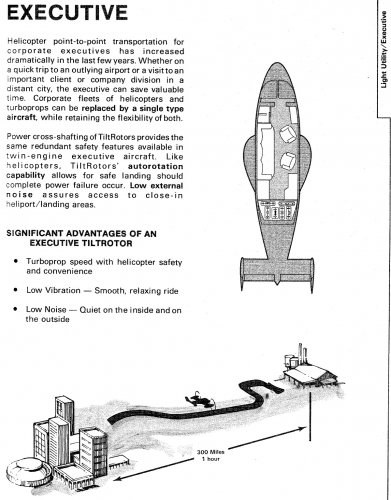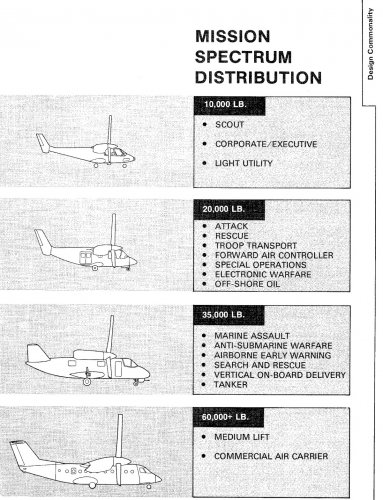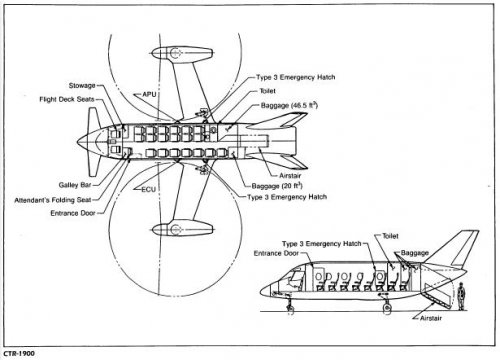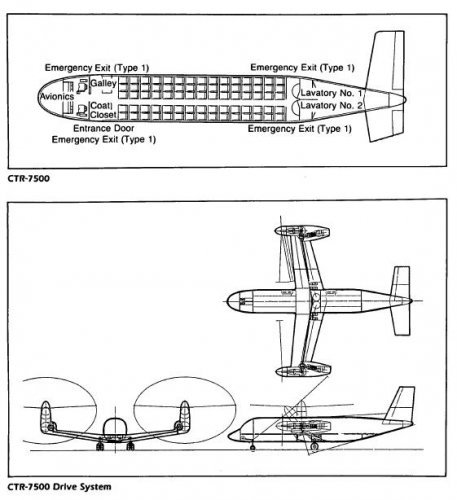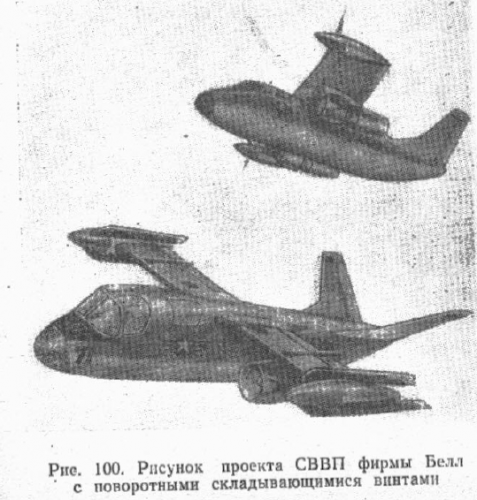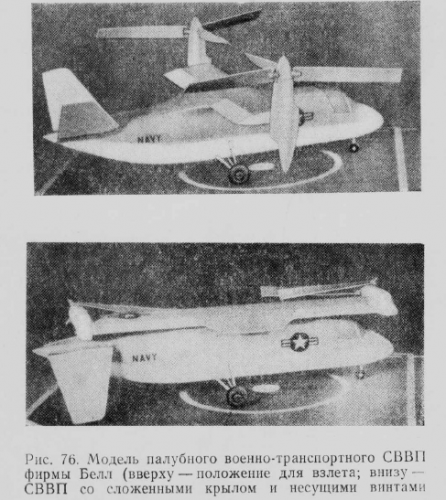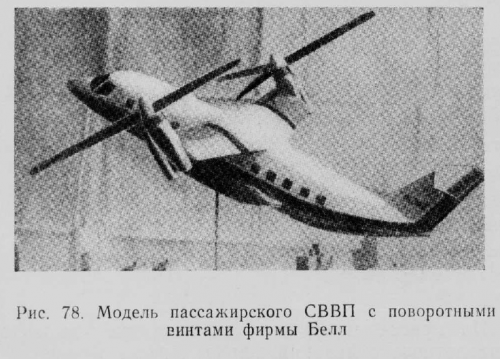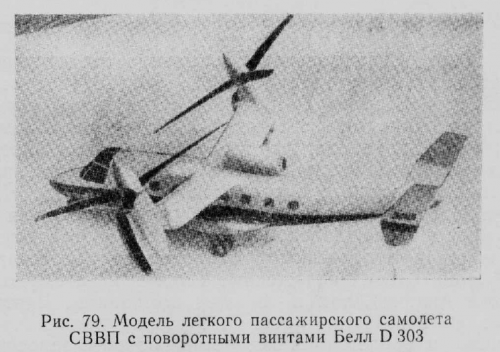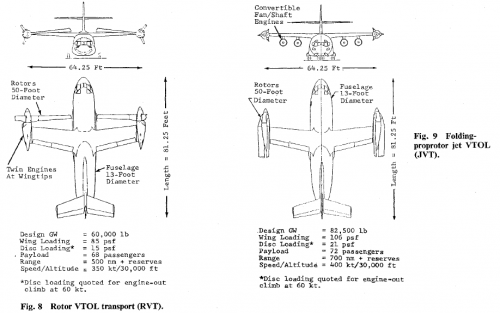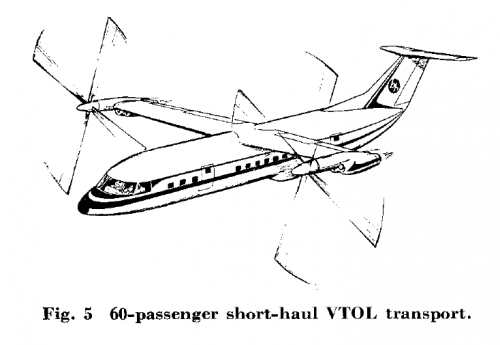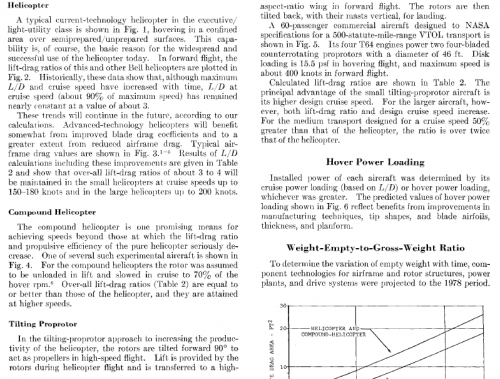You are using an out of date browser. It may not display this or other websites correctly.
You should upgrade or use an alternative browser.
You should upgrade or use an alternative browser.
Various Bell tilt-rotor projects
- Thread starter dragon72
- Start date
- Joined
- 26 May 2006
- Messages
- 34,815
- Reaction score
- 15,698
- Joined
- 25 June 2009
- Messages
- 14,730
- Reaction score
- 6,068
RAP said:An armed version of the XV-15 propsed before the LHX program (I think).
It's the D-314. We already have a topic on this and the other military applications of the XV-15 somewhere.
- Joined
- 27 December 2005
- Messages
- 17,711
- Reaction score
- 26,159
- Joined
- 27 December 2005
- Messages
- 17,711
- Reaction score
- 26,159
- Joined
- 3 October 2007
- Messages
- 1,960
- Reaction score
- 1,194
PaulMM (Overscan) said:Edited for clarity... mast-mounted sight is noteworthy.
If I remember correctly, the mast mounted sight telescoped and was flush with the fuselage in forward flight. In those days it was thought that there would be such a severe anti-air threat that rotorcraft in the hover would have to hide behind cover and just have sensors peek over.
- Joined
- 1 May 2007
- Messages
- 2,593
- Reaction score
- 1,958
Take a look at the 'armed XV-15 scout' - It appears to consist of the complete forward fuselage of the YAH-63 grafted onto the XV-15 airframe.
@RAP - how about sharing the whole brochure here, please...?
cheers,
Robin.
@RAP - how about sharing the whole brochure here, please...?
cheers,
Robin.
jsport
what do you know about surfing Major? you're from-
- Joined
- 27 July 2011
- Messages
- 7,711
- Reaction score
- 5,716
Thank you Hesham.
A tiltrotor escort for V-22 is still needed and a tiltrotor w/ MMS would have been a Battlefield Area Interdiction (BAI) "Game Changer"... pilot would just have to be conscious of the downwash issue.
Changer"... pilot would just have to be conscious of the downwash issue.
A tiltrotor escort for V-22 is still needed and a tiltrotor w/ MMS would have been a Battlefield Area Interdiction (BAI) "Game
- Joined
- 18 October 2006
- Messages
- 4,203
- Reaction score
- 4,889
:jsport said:Thank you Hesham.
...pilot would just have to be conscious of the downwash issue.
Had opportunity to go to the Bell plant on several occassions as a young lieutenant and talk with the engineers about these concepts. They were very wary of the mast mounted site being up at all during the higher speed flights, but I remember one of the senior warrant officers expousing the need to be able to fight all the Hinds, Havocs and Hokums that would be blackening the skys of (then) West Germany. Spent a lot of time doing the "sneak and peek" 3750 meter engagement practice as a young aviator. Thought we were the bomb until the air defenders told us that the doppler signature of the air being sucked down through our rotors was a dead give away even when we were hiding behind hills. Good news was that we were soon to get the Apache with a much longer ranged missile.
I do agree with jsport that the introduction of an aircraft like this in the 90's would have led to a lot of nervousness on the USAF Inc. part.
jsport
what do you know about surfing Major? you're from-
- Joined
- 27 July 2011
- Messages
- 7,711
- Reaction score
- 5,716
F-14D said:PaulMM (Overscan) said:Edited for clarity... mast-mounted sight is noteworthy.
If I remember correctly, the mast mounted sight telescoped and was flush with the fuselage in forward flight. In those days it was thought that there would be such a severe anti-air threat that rotorcraft in the hover would have to hide behind cover and just have sensors peek over.
would agree w/ the above that the MMS would need to be flush in forward flight. A Joint Common Missile, especially if it could be dual use against aircraft (beleive that is not currently envisioned) then those deep and dispersed would present an adversary quite a funk. Given air superiority, of course.
Sensor Fused Weapon (SFW) is not necessarily a panacea..
- Joined
- 3 October 2007
- Messages
- 1,960
- Reaction score
- 1,194
jsport said:Thank you Hesham.
A tiltrotor escort for V-22 is still needed and a tiltrotor w/ MMS would have been a Battlefield Area Interdiction (BAI) "GameChanger"... pilot would just have to be conscious of the downwash issue.
Downwash is a function of the wieght of the a/c and the size of the proprotors. V-22, for example, has proprotors that are smaller than optimum for its size (this was for shipboard opreations abeam the isalnd), with a consequent increase in downwash. V-280 is said to have more downwwash than the XV-15, but substantially less than the V-22.
- Joined
- 3 October 2007
- Messages
- 1,960
- Reaction score
- 1,194
jsport said:F-14D said:PaulMM (Overscan) said:Edited for clarity... mast-mounted sight is noteworthy.
If I remember correctly, the mast mounted sight telescoped and was flush with the fuselage in forward flight. In those days it was thought that there would be such a severe anti-air threat that rotorcraft in the hover would have to hide behind cover and just have sensors peek over.
would agree w/ the above that the MMS would need to be flush in forward flight. A Joint Common Missile, especially if it could be dual use against aircraft (beleive that is not currently envisioned) then those deep and dispersed would present an adversary quite a funk. Given air superiority, of course.
Sensor Fused Weapon (SFW) is not necessarily a panacea..
Well, the Marines just use AIM-9 for A2A, and would probably do so on a Tilt-Rotor gunship. An interesitng concept had theS-67 gone into service was to mount 10-12 AIM-9s. It would function as a difficult-to-detect very mobile SAM site.
jsport
what do you know about surfing Major? you're from-
- Joined
- 27 July 2011
- Messages
- 7,711
- Reaction score
- 5,716
F-14D said:jsport said:Thank you Hesham.
A tiltrotor escort for V-22 is still needed and a tiltrotor w/ MMS would have been a Battlefield Area Interdiction (BAI) "GameChanger"... pilot would just have to be conscious of the downwash issue.
Downwash is a function of the wieght of the a/c and the size of the proprotors. V-22, for example, has proprotors that are smaller than optimum for its size (this was for shipboard opreations abeam the isalnd), with a consequent increase in downwash. V-280 is said to have more downwwash than the XV-15, but substantially less than the V-22.
If the V-280 has no issues w/ 10k lb lift and still has less downwash then 'allgood'. Maybe 10k is not enough for JMR. Having to depend on 47s to lift equipped JTLVs (weight appears not to be close to necessary objective on current JTLV contenders) would render an Air Assault Div to more like a reinforced BN/Company. Tiltrotor ranges can not be realised w/ drag of underslung JTLV but idea craft needs to perform both missions.
- Joined
- 18 October 2006
- Messages
- 4,203
- Reaction score
- 4,889
Indeed the weight of the new Army tactical vehicles is a significant factor that would significantly impact the size of any new rotorcraft. Even the CH-47F will have sub-optimal capability with JTLV. I note that the USMC and SOF have specified new vehicles that must fit inside of CV-22 and MH-47. Having done sling load ops with bad guys around, I can tell you catagorically that one of the aircrew always has a hand close to the release at the first sign of trouble. Tactical evasion maneuvers with an external load are not possible. Interestingly like the SOF community the German Bundeswehr has had a number of internal capable combat vehicles for a number of years. If the current plan for the future rotorcraft remains nothing more than a one for one (never going to happen, never has) trade for UH-60 I doubt it will survive contact.jsport said:F-14D said:jsport said:Thank you Hesham.
A tiltrotor escort for V-22 is still needed and a tiltrotor w/ MMS would have been a Battlefield Area Interdiction (BAI) "GameChanger"... pilot would just have to be conscious of the downwash issue.
Downwash is a function of the wieght of the a/c and the size of the proprotors. V-22, for example, has proprotors that are smaller than optimum for its size (this was for shipboard opreations abeam the isalnd), with a consequent increase in downwash. V-280 is said to have more downwwash than the XV-15, but substantially less than the V-22.
If the V-280 has no issues w/ 10k lb lift and still has less downwash then 'allgood'. Maybe 10k is not enough for JMR. Having to depend on 47s to lift equipped JTLVs (weight appears not to be close to necessary objective on current JTLV contenders) would render an Air Assault Div to more like a reinforced BN/Company. Tiltrotor ranges can not be realised w/ drag of underslung JTLV but idea craft needs to perform both missions.
An S-67 with ten sidewinders! That would have been a sight to see. I seriously doubt the USAF Inc., would have let that stand had that come to fruition.
jsport
what do you know about surfing Major? you're from-
- Joined
- 27 July 2011
- Messages
- 7,711
- Reaction score
- 5,716
Absolutely for internal vehicles and there carriers both of which happen to be survivable ....think we're still waitin for those proposals.. mentioned earlier in the JMR thread this is not easy and requires better requirements, detailed oversight and much more gov assumed risk... ie $$$
maybe even a combination of tiltrotor and compound buys...again more $$...
the low $ alternative.. less than second rate by 2030.
maybe even a combination of tiltrotor and compound buys...again more $$...
the low $ alternative.. less than second rate by 2030.
- Joined
- 29 January 2008
- Messages
- 914
- Reaction score
- 2,036
More drawings from a 1980 Bell document for tiltrotor VTOL designs.
Attachments
- Joined
- 25 June 2009
- Messages
- 14,730
- Reaction score
- 6,068
Great stuff. It really frustrates me to no end to see the amount of research, designing and testing that Bell put into tiltrotor since the early 1950 and how they completely gave up on all civilian projects by selling that to Agusta. If their Valor fails to win the current competition it's in, Bell's tiltrotor activity will become history instead of making history.
Civil Tiltrotor Missions and Applications: A Research Study
Abstract:
URL:
http://ntrs.nasa.gov/archive/nasa/casi.ntrs.nasa.gov/19910004111_1991004111.pdf
Abstract:
In 1983, an FAA-sponsored National Rotorcraft Program sought to identify improvements to the national interurban transportation networks and determined that conventional helicopters did not have the potential to satisfy requirements because of a lack of capacity, high operational costs, and high noise levels. Tiltrotors, it was felt offered a better potential to improve interurban air transport service. In 1985, the FAA proposed a joint civil tiltrotor study with NASA and DOD that would capitalize on development of the military V-22 tiltrotor and document the potential of the commercial tiltrotor transport market. The results of a study on the mission and application of a civil tiltrotor is presented. This study addresses national issues and includes a market summary. A technical summary provides information on six design configurations and potential risk areas are identified. The development of a National Plan for a tiltrotor transportation system is recommended including civil tiltrotor technology development, infrastructure planning and development, a flight technology demonstration plan, and near term actions.
URL:
http://ntrs.nasa.gov/archive/nasa/casi.ntrs.nasa.gov/19910004111_1991004111.pdf
- Joined
- 11 March 2006
- Messages
- 8,622
- Reaction score
- 3,771
pedrospe said:...,i wonder why they needed 2 sets of engines...
Don't think, that there are actually two different engines, but the trail rotor (as shown here
http://www.secretprojects.co.uk/forum/index.php/topic,7449.msg113429.html#msg113429 )
probably would have been driven by the same engines, as used for cruising flight, maybe via
bleed air or via shaft, I don't know.
A similar concept we have here, too : http://www.secretprojects.co.uk/forum/index.php/topic,7449.msg101290.html#msg101290
- Joined
- 11 March 2006
- Messages
- 8,622
- Reaction score
- 3,771
The first one we had here http://www.secretprojects.co.uk/forum/index.php/topic,7449.msg101297.html#msg101297
- Joined
- 25 June 2009
- Messages
- 14,730
- Reaction score
- 6,068
Jemiba said:The first one we had here http://www.secretprojects.co.uk/forum/index.php/topic,7449.msg101297.html#msg101297
Exactly the reason why I abstain from posting just about everything from the TsAGI's techical information journal... :
- Joined
- 11 March 2006
- Messages
- 8,622
- Reaction score
- 3,771
Probably a good decision, I think.
And I would appreciate, if maybe members would post information from those
reports, who good give at least a short survey of the descriptions. Otherwise
we have lots of posts, which can be fully acknowledged only by a small percentage
of us here, not to speak of the inherent danger of misunderstandings.
And I would appreciate, if maybe members would post information from those
reports, who good give at least a short survey of the descriptions. Otherwise
we have lots of posts, which can be fully acknowledged only by a small percentage
of us here, not to speak of the inherent danger of misunderstandings.
- Joined
- 26 May 2006
- Messages
- 34,815
- Reaction score
- 15,698
- Joined
- 1 November 2009
- Messages
- 638
- Reaction score
- 428
I think a forward sweep to the wings may be creating that illusion.
- Joined
- 25 June 2009
- Messages
- 14,730
- Reaction score
- 6,068
The Artist said:I think a forward sweep to the wings may be creating that illusion.
That could be true for the starboard wing, but not the port one. If you study the perspective of this image closely, you'll find that the two wings either lean to the starboard side, or move obliquely with the starboard side going forward. Of course both interepretations are incorrect, and I'm pretty sure this is supposed to depict a tilt-rotor design with perfectly straight wings. The tail looks weird too. But even if you were right and this was meant to depict a forward-swept wing project, I think it still looks awkward.
- Joined
- 1 November 2009
- Messages
- 638
- Reaction score
- 428
Skyblazer said:The Artist said:I think a forward sweep to the wings may be creating that illusion.
That could be true for the starboard wing, but not the port one. If you study the perspective of this image closely, you'll find that the two wings either lean to the starboard side, or move obliquely with the starboard side going forward. Of course both interepretations are incorrect, and I'm pretty sure this is supposed to depict a tilt-rotor design with perfectly straight wings. The tail looks weird too. But even if you were right and this was meant to depict a forward-swept wing project, I think it still looks awkward.
Dihedral may also be playing a part in the illusion. While searching for viewing angles for aircraft art, I've spent a fair amount of time looking at models of military and airliner aircraft from many different angels. I have found that if I photograph the model (with a flat lens) then do a line drawing tracing, the resulting drawing of certain viewing angles can look distorted unless the drawing is looked at from the view-point which is a distance in the correct scale to the distance between the model and camera when the picture was taken. That may be why I'm not reading the same problems you are noting in this drawing.
Similar threads
-
-
Bell Tilt-Rotor Projects from NASA Ames website
- Started by overscan (PaulMM)
- Replies: 8
-
-
Bell Trail Rotor convertiplane (stowed rotor)
- Started by AeroFranz
- Replies: 4
-
Bell D313 STOL tilt-rotor transport for 100 passengers
- Started by hesham
- Replies: 2

